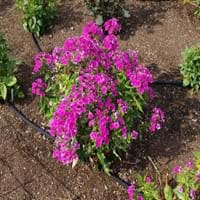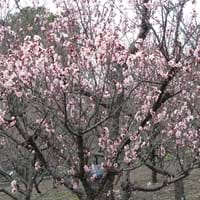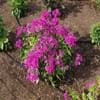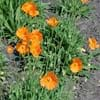Life Span
Perennial
Perennial
Origin
Northeastern United States, Mid-Atlantic United States, Southeastern United States, North-Central United States, Central United States, South-Central United States, Canada
China, Korea
Types
Blue Ice, Eventide, Starfire
Not Available
Number of Varieties
Not Available
Habitat
Dappled Shade, Shady Edge, Woodland Garden
All sorts of environments, Fertile bottom land, Well Drained
USDA Hardiness Zone
4-8
6-9
Sunset Zone
1a, 1b, 2a, 2b, 3a, 3b, 4, 5, 6, 7, 8, 9, 10, 11, 12, 13, 14, 18, 19, 20, 21
3a, 3b, 4, 5, 6, 7, 8, 9, 12, 13, 14, 15, 16, 17, 18, 19, 20, 21, 22
Habit
Upright/Erect
Oval or Rounded
Minimum Height
Not Available
Minimum Width
Not Available
Flower Color
Purple, Magenta
White, Pink, Rose
Flower Color Modifier
Bicolor
Bicolor
Fruit Color
Not Available
Yellow
Leaf Color in Spring
Chartreuse, Gold
Green
Leaf Color in Summer
Chartreuse, Gold
Green
Leaf Color in Fall
Chartreuse, Yellow green, Tan
Yellow, Light Yellow, Yellow green
Leaf Color in Winter
Not Available
Not Available
Leaf Shape
Ovate
Aristate
Plant Season
Summer, Fall
Spring, Winter
Sunlight
Full Sun, Partial Sun
Full Sun, Partial Sun
Type of Soil
Clay, Loam, Sand
Clay, Loam
The pH of Soil
Acidic, Neutral, Alkaline
Acidic, Neutral
Soil Drainage
Well drained
Well drained
Bloom Time
Summer, Late Summer, Early Fall, Fall
Early Spring, Early Winter, Winter, Late Winter
Tolerances
Not Available
Not Available
Where to Plant?
Ground
Ground
How to Plant?
Seedlings
Budding, Seedlings
Plant Maintenance
Medium
Medium
Watering Requirements
Average Water Needs, Doesn't tolerate standing water
Average Water Needs, Does not require lot of watering, Water more frequently during periods of extreme drought
In Summer
Lots of watering
Lots of watering
In Spring
Moderate
Moderate
In Winter
Average Water
Average Water
Soil pH
Acidic, Neutral, Alkaline
Acidic, Neutral
Soil Type
Clay, Loam, Sand
Clay, Loam
Soil Drainage Capacity
Well drained
Well drained
Sun Exposure
Full Sun, Partial Sun
Full Sun, Partial Sun
Pruning
Remove damaged leaves, Remove dead branches, Remove dead leaves
Remove damaged leaves, Remove dead branches, Remove dead leaves
Fertilizers
General purpose slow-acting granular fertilizer
All-Purpose Liquid Fertilizer, Apply N-P-K, fertilize in growing season
Pests and Diseases
Powdery mildew, Rust, Septoria leaf spot, Stem canker
Pests and diseases free, Red blotch
Plant Tolerance
Drought
Drought, Full Sun
Flower Petal Number
Single
Single
Foliage Texture
Medium
Medium
Foliage Sheen
Matte
Not Available
Attracts
Butterflies
Birds
Allergy
Pollen
Not Available
Aesthetic Uses
Borders, Ground Cover
Not Used For Aesthetic Purpose
Beauty Benefits
Not Available
Not Available
Environmental Uses
Air purification
Air purification
Medicinal Uses
No Medicinal Use
antimicrobial, Gastrointestinal disorders, Ulcers
Part of Plant Used
Not Available
Flowers, Fruits
Other Uses
Used as Ornamental plant
Sauces, Sometimes used for making wine
Used As Indoor Plant
No
No
Used As Outdoor Plant
Yes
Yes
Garden Design
Cutflower, Feature Plant, Mixed Border, Wildflower
Feature Plant, Fruit / Fruit Tree, Shade Trees, Street Trees
Botanical Name
PHLOX paniculata 'Goldmine'
PRUNUS mume
Common Name
Garden Phlox, Goldmine Phlox
Japanese Apricot
In Hindi
Goldmine Phlox
जापानी खुबानी
In German
Goldgrube Phlox
japanische Aprikose
In French
Phlox Goldmine
abricot japonais
In Spanish
Phlox Goldmine
albaricoque japonés
In Greek
Goldmine Phlox
Ιαπωνικά Βερίκοκο
In Portuguese
Phlox Goldmine
Apricot japonês
In Polish
Goldmine Phlox
japońska morela
In Latin
.org Phlox
Persicum Italica
Phylum
Magnoliophyta
Tracheophyta
Class
Magnoliopsida
Magnoliopsida
Family
Polemoniaceae
Rosaceae
Clade
Angiosperms, Asterids, Eudicots
Angiosperms, Eudicots, Rosids
Tribe
Phlocideae
Not Available
Subfamily
Polemonioideae
Not Available
Number of Species
Not Available
Not Available
Importance of Goldmine Phlox and Japanese Apricot
Want to have the most appropriate plant for your garden? You might want to know the importance of Goldmine Phlox and Japanese Apricot. Basically, these two plants vary in many aspects. Compare Goldmine Phlox and Japanese Apricot as they differ in many characteristics such as their life, care, benefits, facts, etc. Every gardener must at least have the slightest clue about the plants he wants to plant in his garden. Compare their benefits, which differ in many ways like facts and uses. The medicinal use of Goldmine Phlox is No Medicinal Use whereas of Japanese Apricot is antimicrobial, Gastrointestinal disorders and Ulcers. Goldmine Phlox has beauty benefits as follows: Not Available while Japanese Apricot has beauty benefits as follows: Not Available.
Compare Facts of Goldmine Phlox vs Japanese Apricot
How to choose the best garden plant for your garden depending upon its facts? Here garden plant comparison will help you to solve this query. Compare the facts of Goldmine Phlox vs Japanese Apricot and know which one to choose. As garden plants have benefits and other uses, allergy is also a major drawback of plants for some people. Allergic reactions of Goldmine Phlox are Pollen whereas of Japanese Apricot have Not Available respectively. Having a fruit bearing plant in your garden can be a plus point of your garden. Goldmine Phlox has no showy fruits and Japanese Apricot has no showy fruits. Also Goldmine Phlox is not flowering and Japanese Apricot is not flowering . You can compare Goldmine Phlox and Japanese Apricot facts and facts of other plants too.





